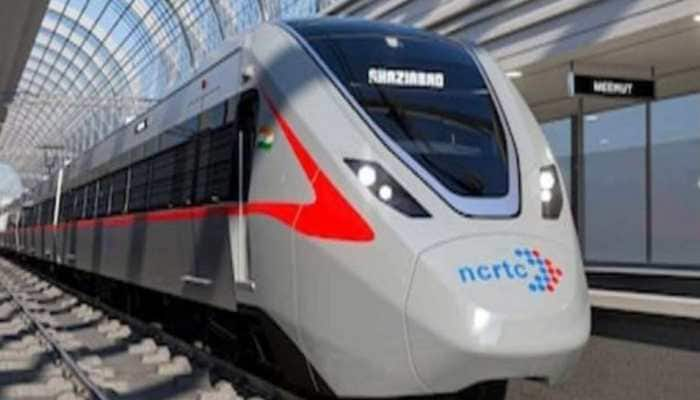The ugly truth behind Manipur blockade
Economic blockade has re-kindled ethnic divide and hatred among settlers.
Trending Photos
)
 Chonmipem Horam
Sitting in Delhi, little did we realise that in the far North-Eastern state of Manipur, an economic blockade dealt a big blow to the masses and re-kindled a sort of ethnic divide and hatred among settlers. The state was held to ransom for over two months. Though the blockade was suspended on June 18 after the central government’s intervention, the United Naga Council has called for the resumption of the protests. Now a fresh blockade is expected to worsen the economic situation of the state.
The two-month long blockade brought in immense miseries for the people of Manipur. The blockade started on April 11 as a protest to the Ibobi Singh-led state government’s decision to hold Autonomous District Councils (ADCs) polls despite major opposition from Naga groups. It gained momentum later when the government banned NSCN (IM) leader Thuingaleng Muivah`s entry to the state, citing security issues.
Muivah wanted to visit his birthplace `Somdal` in Ukhrul district, Manipur. Although Muivah tried hard to convey the message that he was going to visit his native village for peace and to meet his followers, the state government managed to foil his plan, stating that a ceasefire with the NSCN (IM) does not extend beyond Nagaland, therefore his visit was objectionable.
The NSCN (IM)’s demand for integration of all Naga inhabited areas of Assam, Manipur and Arunachal Pradesh was highlighted by the state government. It further slammed the Naga organization, saying under no circumstance would Manipur`s territory be compromised.Basis of eco-blockade
The blockade was initially imposed by the All Naga Students Association of Manipur (ANSAM) to protest against the holding of ADCs polls in the hill areas. As a result, the National Highway 39 and the National Highway 53, the economic lifelines of the state, came to a standstill.
The students’ body sought amendments in the existing ADC Act. According to them, the Manipur (Hill Areas) ADC Act, 2008 (Third Amendment) lacks independent powers and remains subservient to the state government. They allege that the Act, which was brought in to ensure the tribal people’s rights, did in fact take them away. There were reported flaws in candidacy and voting rights, land rights, appointment or succession of chiefs, customary rights, recognition of village and absence of financial autonomy.
Notwithstanding a boycott call issued by the United Naga Council (UNC) and several other Naga bodies, the Manipur government stood firm on holding the ADC polls. This forced the Naga groups to start an indefinite eco-blockade against the government’s move. The Naga Students Federation (NSF), after its members were barred from entering Oinam village in Senapati district, joined hands with ANSAM on May 4 to strengthen the blockade.
The protest got further strengthened when two Naga students were killed in firing by Manipur Commandoes on May 6 at Mao Gate. The students were holding a demonstration in protest against the government’s decision to ban NSCN (IM) Muivah`s visit to his native village. There were also reports of police flag marches and harassment of locals in the area. This helped the protesters spearhead the agitation across the Naga inhabited areas.However, an unmoved government held the ADC elections in two phases on May 26 and June 2, 2010 in which the ruling Congress party won a sweeping victory. Protests continued even after the polls. They students demanded the authorities lift the ban on Muivah’s visit and repeal Section 144 imposed in the Naga areas.
Following a request from Prime Minister Manmohan Singh and an appeal by several organisations, the agitating students temporarily lifted the blockade on humanitarian grounds on June 18. They, however, resumed it later, saying their demands were not met.
According to NSF, the economic blockade was not targeted against any particular community as even the Nagas were hit by its repercussions. Since then, even Muivah deferred his visit keeping in view the tense situation.Effects of blockade
Supply woes: The blockade left the masses in great distress due to acute shortage of food supply. As supplies from the neighboring states were totally cut-off, the prices of food articles jumped many-fold in several parts of the state including Imphal valley and Naga hill areas. Rice prices jumped up to Rs 100/kg, cooking gas cylinders to Rs 1,500 and petrol to Rs 200/litre. The blockade has also hit the healthcare sector. Even at the RIMS, one of the major hospitals in Imphal, surgeries were halted due to lack of oxygen cylinders and medicines. Even after the suspension of the blockade, the state government failed miserably to control the price escalation of essential commodities. And now, with the resumption of the blockade, the people of Manipur have to face the same dilemma and hardships again.
ADCs polls agitation: During the ADCs polls, there were attacks on houses of several candidates in Senapati, Ukhrul and Tamenglong districts by the protestors. It was also reported that when some Naga volunteers were assaulted by India Reserve Battalions (IRBs) in Ukhrul district, the protestors burned down the District Council office and three vehicles of Ukhrul district Deputy Commissioner.
At the recent Naga People`s Convention held in Senapati, the Nagas’ body took a decision to severe all ties with the Manipur government. It stated that ADCs polls were null and void and no district council would be allowed to function in the Naga areas.
Fear of ethnic clashes : One of the most dangerous outcomes of the blockade is that it revived the fears of an ethnic clash between Meiteis (Manipuris) and Nagas. The Ibobi government’s decision to bar Muivah from visiting his birthplace didn’t go down well with the Nagas. The decision to ban Muivah`s entry was taken out of fear that it would stoke ethnic tensions. The Meiteis panicked that it would also strengthen the Naga movement.
Moreover, the firing incident at Mao Gate resulting in the loss of 2 lives ignited a spirit of resentment among the Meiteis and Nagas. There were reports of Nagas fleeing to Nagaland in fear of ethnic clashes. Besides this, the Meiteis in hill areas also moved down to Imphal for their own safety. It must also be noted here that seven Naga MLAs tendered resignation from the House in protest against the government’s move to ban Muivah` s visit.
With frequent bandhs and strikes frequently disrupting the public life and crippling the state’s economy, the state government should change its approaches towards contentious issues and be more receptive to people’s demands. Another issue in focus is the central government’s laid-back attitude towards the Northeastern region. If only the Centre had intervened earlier to end the blockade, the people’s suffering could have been avoided. It’s equally disturbing that the mainstream national media didn’t give much attention to the crisis in the Northeast.
Chonmipem Horam
Sitting in Delhi, little did we realise that in the far North-Eastern state of Manipur, an economic blockade dealt a big blow to the masses and re-kindled a sort of ethnic divide and hatred among settlers. The state was held to ransom for over two months. Though the blockade was suspended on June 18 after the central government’s intervention, the United Naga Council has called for the resumption of the protests. Now a fresh blockade is expected to worsen the economic situation of the state.
The two-month long blockade brought in immense miseries for the people of Manipur. The blockade started on April 11 as a protest to the Ibobi Singh-led state government’s decision to hold Autonomous District Councils (ADCs) polls despite major opposition from Naga groups. It gained momentum later when the government banned NSCN (IM) leader Thuingaleng Muivah`s entry to the state, citing security issues.
Muivah wanted to visit his birthplace `Somdal` in Ukhrul district, Manipur. Although Muivah tried hard to convey the message that he was going to visit his native village for peace and to meet his followers, the state government managed to foil his plan, stating that a ceasefire with the NSCN (IM) does not extend beyond Nagaland, therefore his visit was objectionable.
The NSCN (IM)’s demand for integration of all Naga inhabited areas of Assam, Manipur and Arunachal Pradesh was highlighted by the state government. It further slammed the Naga organization, saying under no circumstance would Manipur`s territory be compromised.Basis of eco-blockade
The blockade was initially imposed by the All Naga Students Association of Manipur (ANSAM) to protest against the holding of ADCs polls in the hill areas. As a result, the National Highway 39 and the National Highway 53, the economic lifelines of the state, came to a standstill.
The students’ body sought amendments in the existing ADC Act. According to them, the Manipur (Hill Areas) ADC Act, 2008 (Third Amendment) lacks independent powers and remains subservient to the state government. They allege that the Act, which was brought in to ensure the tribal people’s rights, did in fact take them away. There were reported flaws in candidacy and voting rights, land rights, appointment or succession of chiefs, customary rights, recognition of village and absence of financial autonomy.
Notwithstanding a boycott call issued by the United Naga Council (UNC) and several other Naga bodies, the Manipur government stood firm on holding the ADC polls. This forced the Naga groups to start an indefinite eco-blockade against the government’s move. The Naga Students Federation (NSF), after its members were barred from entering Oinam village in Senapati district, joined hands with ANSAM on May 4 to strengthen the blockade.
The protest got further strengthened when two Naga students were killed in firing by Manipur Commandoes on May 6 at Mao Gate. The students were holding a demonstration in protest against the government’s decision to ban NSCN (IM) Muivah`s visit to his native village. There were also reports of police flag marches and harassment of locals in the area. This helped the protesters spearhead the agitation across the Naga inhabited areas.However, an unmoved government held the ADC elections in two phases on May 26 and June 2, 2010 in which the ruling Congress party won a sweeping victory. Protests continued even after the polls. They students demanded the authorities lift the ban on Muivah’s visit and repeal Section 144 imposed in the Naga areas.
Following a request from Prime Minister Manmohan Singh and an appeal by several organisations, the agitating students temporarily lifted the blockade on humanitarian grounds on June 18. They, however, resumed it later, saying their demands were not met.
According to NSF, the economic blockade was not targeted against any particular community as even the Nagas were hit by its repercussions. Since then, even Muivah deferred his visit keeping in view the tense situation.Effects of blockade
Supply woes: The blockade left the masses in great distress due to acute shortage of food supply. As supplies from the neighboring states were totally cut-off, the prices of food articles jumped many-fold in several parts of the state including Imphal valley and Naga hill areas. Rice prices jumped up to Rs 100/kg, cooking gas cylinders to Rs 1,500 and petrol to Rs 200/litre. The blockade has also hit the healthcare sector. Even at the RIMS, one of the major hospitals in Imphal, surgeries were halted due to lack of oxygen cylinders and medicines. Even after the suspension of the blockade, the state government failed miserably to control the price escalation of essential commodities. And now, with the resumption of the blockade, the people of Manipur have to face the same dilemma and hardships again.
ADCs polls agitation: During the ADCs polls, there were attacks on houses of several candidates in Senapati, Ukhrul and Tamenglong districts by the protestors. It was also reported that when some Naga volunteers were assaulted by India Reserve Battalions (IRBs) in Ukhrul district, the protestors burned down the District Council office and three vehicles of Ukhrul district Deputy Commissioner.
At the recent Naga People`s Convention held in Senapati, the Nagas’ body took a decision to severe all ties with the Manipur government. It stated that ADCs polls were null and void and no district council would be allowed to function in the Naga areas.
Fear of ethnic clashes : One of the most dangerous outcomes of the blockade is that it revived the fears of an ethnic clash between Meiteis (Manipuris) and Nagas. The Ibobi government’s decision to bar Muivah from visiting his birthplace didn’t go down well with the Nagas. The decision to ban Muivah`s entry was taken out of fear that it would stoke ethnic tensions. The Meiteis panicked that it would also strengthen the Naga movement.
Moreover, the firing incident at Mao Gate resulting in the loss of 2 lives ignited a spirit of resentment among the Meiteis and Nagas. There were reports of Nagas fleeing to Nagaland in fear of ethnic clashes. Besides this, the Meiteis in hill areas also moved down to Imphal for their own safety. It must also be noted here that seven Naga MLAs tendered resignation from the House in protest against the government’s move to ban Muivah` s visit.
With frequent bandhs and strikes frequently disrupting the public life and crippling the state’s economy, the state government should change its approaches towards contentious issues and be more receptive to people’s demands. Another issue in focus is the central government’s laid-back attitude towards the Northeastern region. If only the Centre had intervened earlier to end the blockade, the people’s suffering could have been avoided. It’s equally disturbing that the mainstream national media didn’t give much attention to the crisis in the Northeast.
Stay informed on all the latest news, real-time breaking news updates, and follow all the important headlines in india news and world News on Zee News.
Advertisement
Live Tv
Advertisement







)
)
)
)
)
)
)
)
)
)
